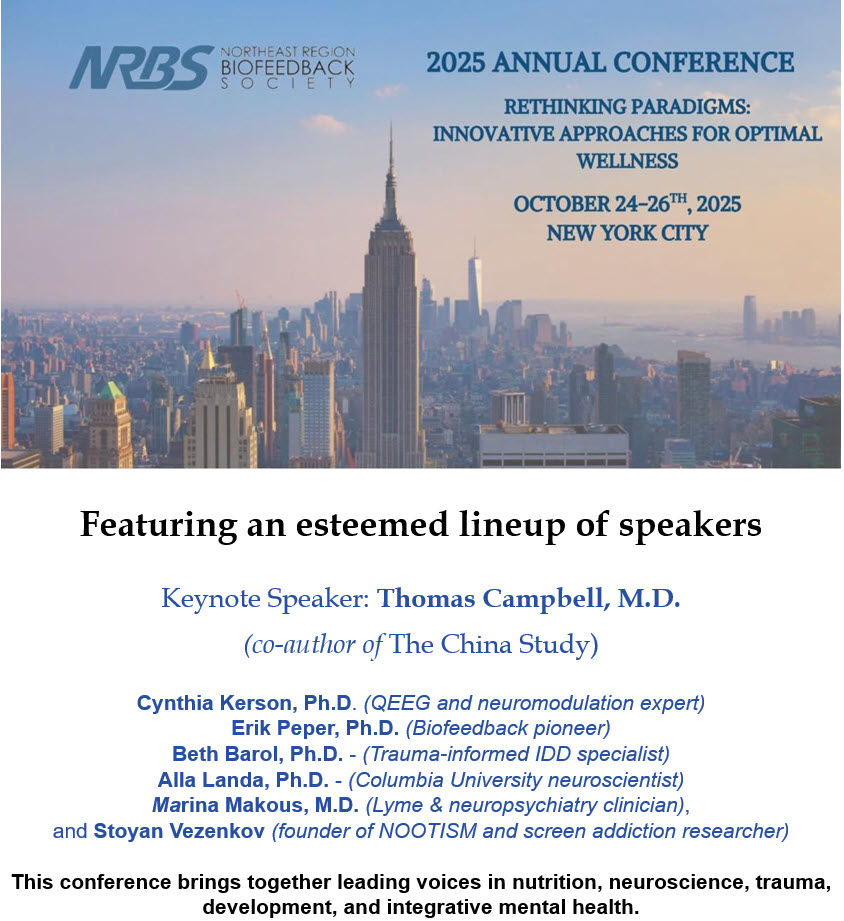5-Min Science: Deep Sleep Clears Toxic Proteins
- Fred Shaffer
- Aug 31
- 8 min read

Your brain pulls an all-nighter every night, but not the kind you're thinking of. This post builds on Lydia Densworth's Scientific American article, "How Your Brain’s Nightly Cleanse Keeps It Healthy."
While you sleep, a hidden cleaning crew springs into action, scrubbing away the day's metabolic mess through a remarkable system that scientists only discovered a decade ago. This isn't just housekeeping. It's a matter of life, death, and everything your mind holds dear.
When Scientists Found the Brain's Hidden Plumbing
For decades, neuroscientists faced a puzzling mystery: every other organ in your body has a lymphatic system to drain waste, but the brain seemed to lack this basic plumbing. How did three pounds of the most metabolically active tissue in your body dispose of its cellular garbage?
The breakthrough came in 2012 when Maiken Nedergaard's team peered into living mouse brains and discovered something extraordinary. Cerebrospinal fluid wasn't just cushioning the brain. It was actively flowing through tiny channels that wrapped around blood vessels like sleeves. Star-shaped cells called astrocytes were orchestrating this flow, guiding fluid into the brain alongside arteries, where it mixed with the fluid between brain cells to collect waste, then swept the debris out along veins.
Nedergaard dubbed this system "glymphatic," blending "glial" (the support cells doing the work) with "lymphatic" (the drainage system it resembled). The brain had been hiding its own sophisticated waste management system in plain sight. Glymphatic system graphic © Claus Lunau/Science Photo Library.

The Sleep Connection That Changed Everything
The real shock came when researchers tracked this cleaning system around the clock. Logic suggested that an active, awake brain would clear more waste, like a busy factory running its conveyor belts at full speed. The opposite proved true.
When mice fell asleep, tracer dyes injected into their cerebrospinal fluid washed through their brains like a flood. When the same mice were awake, the tracer barely trickled in. That's 95 percent less flow than during sleep.
During slumber, the spaces between brain cells expanded by 60 percent, transforming narrow alleys into wide boulevards for fluid flow. Sleeping mice cleared amyloid-beta (the protein that gunks up Alzheimer's brains) twice as fast as their wakeful counterparts.
Sleep wasn't just rest. It was the brain's designated wash cycle.
Deep Sleep: The Brain's Spin Cycle
Not all sleep stages are created equal when it comes to brain cleaning. The magic happens during deep, slow-wave sleep. That's stage 3 of non-REM sleep, when your brain produces those big, rolling delta waves that look like ocean swells on an EEG.
In 2019, Laura Lewis and her team at Boston University captured something unprecedented using lightning-fast MRI scans that took pictures of the brain every third of a second.
In sleeping humans, they watched as each slow electrical wave triggered a choreographed sequence: neurons across the cortex would fire together, then fall silent in unison. Blood would briefly drain from the head. And immediately, a wave of cerebrospinal fluid would surge in to fill the space.
Every 20 to 30 seconds during deep sleep, massive fluid waves swept through the brain's ventricles and along its blood vessels. The coupling was precise and powerful.
Before each cerebrospinal fluid tsunami, the same pattern appeared: a burst of delta waves, sometimes preceded by theta waves from lighter sleep. The brain's electrical activity was literally driving a physical flushing mechanism. If waking brain fluid moved like water gently sloshing in a bathtub, deep sleep shifted the system into an industrial-strength spin cycle.
The Molecular Machinery Behind the Magic
What powers this nightly flood? Unlike blood circulation, driven by the heart's muscular pump, cerebrospinal fluid flow operates more subtly. Researchers identified two key engines working in concert during sleep.
First, there's norepinephrine. That's the chemical that keeps you alert when awake. During deep sleep, levels of this neurotransmitter plummet, but not uniformly. The brainstem's locus coeruleus releases norepinephrine in slow, rhythmic pulses that cause blood vessels to expand and contract like tiny pistons. These vascular oscillations are ten times larger during sleep than wakefulness, physically pumping fluid through the brain as arteries swell and relax.
Second, the neurons themselves act as microscopic pumps.
When waves of brain cells fire together during delta oscillations, the resulting shifts in ion concentrations and blood flow create pressure changes that propel interstitial fluid through brain tissue.
This discovery also solved a medical puzzle. Some anesthetics that knock people unconscious don't reproduce the brain's natural slow-wave activity and don't enhance glymphatic clearance. The brain's cleaning system demands a specific type of unconsciousness: the synchronized, rhythmic dance of natural deep sleep.
When the System Breaks Down
The clinical implications hit like a thunderbolt.
Alzheimer's disease, Parkinson's, and other neurodegenerative conditions involve the accumulation of toxic proteins that the glymphatic system is designed to clear. Poor sleep could mean poor clearance, allowing these molecular villains to pile up year after year.
Norwegian neurosurgeon Per Kristian Eide put this to the test in a study that would make any sleep-deprived person wince. He injected contrast tracers into volunteers' spinal fluid and tracked clearance over two days using MRI scans. Half the group pulled an all-nighter; the others slept normally.
The results were stark. In sleep-deprived brains, the tracer lingered dramatically longer than in rested ones. Even after a full recovery night of sleep, the sleep-deprived group hadn't caught up. Their brain drainage remained sluggish.
One bad night temporarily gummed up the brain's disposal system, and chronic poor sleep might have cumulative, irreversible effects. This creates a vicious cycle: sleep disturbances promote waste accumulation, which damages brain regions that regulate sleep, leading to worse sleep and more accumulation.
It's a feedback loop that could explain why aging brains, which often sleep poorly, are more vulnerable to neurodegeneration.
Beyond Alzheimer's: A System-Wide Impact
The glymphatic system's reach extends far beyond memory disorders. Traumatic brain injury can disrupt waste clearance pathways, possibly explaining why head injuries increase dementia risk years later. Migraine, stroke, chronic pain, and even psychiatric conditions like depression and schizophrenia (all associated with sleep abnormalities) are now being examined through the lens of impaired brain drainage.
Researchers have found that high stress and elevated norepinephrine can shut off glymphatic function entirely. Chronic pain patients, who often have disrupted sleep and high stress hormones, show signs of impaired brain clearance. Boosting glymphatic flow by managing stress and improving sleep has shown promise in reducing pain in animal studies, suggesting the brain's cleaning system influences far more than just memory and cognition.
The Future of Brain Maintenance
Scientists envision a future where glymphatic health is monitored and optimized like blood pressure or cholesterol. Imaging techniques are being developed to visualize waste clearance in living patients, potentially offering early warning signs of neurodegeneration decades before symptoms appear
Therapeutic possibilities abound. Since cerebrospinal fluid bathes the brain directly and bypasses the blood-brain barrier, it could be a highway for delivering drugs deep into brain tissue while simultaneously flushing out toxins.
Researchers are exploring ways to enhance natural glymphatic flow through sound stimulation, electrical therapy, and targeted medications that optimize the sleep states crucial for clearance.
On a simpler level, protecting and enhancing deep sleep might become a cornerstone of brain health maintenance. Sleep could be prescribed like medicine, with specific targets for slow-wave activity to supercharge overnight brain cleaning.
Sleep is an active process
Every night, when you surrender to sleep, you're not just resting. You're performing essential maintenance on the most complex machine in the known universe. The glymphatic system transforms sleep from a passive state into an active, life-sustaining process that quite literally washes your mind clean.
This changes how we think about sleep disorders, aging, and brain health. It elevates good sleep hygiene from helpful advice to medical necessity. And it offers hope that by understanding and harnessing our brain's nightly cleaning crew, we might prevent or slow the devastating march of neurodegenerative disease.
The ancient wisdom about the restorative power of sleep now carries the weight of molecular evidence. In the quest for healthy brains, it turns out the janitors working the night shift might be the most important employees of all.
Key Takeaways
The glymphatic system represents the brain's dedicated waste management network, where glial cells orchestrate cerebrospinal fluid flow to flush metabolic toxins during sleep. This process is essential for preventing neurodegeneration.
Deep slow-wave sleep drives maximum waste clearance through synchronized delta brain waves that trigger rhythmic pulses of cerebrospinal fluid washing through the brain every 20 to 30 seconds, dramatically enhancing toxin removal compared to wakefulness.
Sleep deprivation severely impairs brain drainage, with just one sleepless night significantly reducing waste clearance the following day. This deficit doesn't fully recover even after subsequent good sleep, suggesting cumulative damage from chronic sleep loss.
Glymphatic dysfunction links directly to neurodegenerative diseases like Alzheimer's, where the system normally clears toxic proteins like amyloid-beta and tau, making enhanced sleep quality a potential therapeutic strategy for preventing or slowing brain deterioration.
The system operates through norepinephrine-driven vascular pulsations and neuron-powered fluid pumps during specific sleep states, offering researchers targets for developing therapies that boost brain clearance through optimized sleep, specialized drugs, or direct cerebrospinal fluid treatments.


Glossary
amyloid-beta: a protein that accumulates into plaques in Alzheimer’s disease; a waste product cleared from the brain during sleep.
astrocyte: a star-shaped glial cell in the brain and spinal cord that supports neurons; astrocytes help form the glymphatic pathways via channels around blood vessels.
cerebrospinal fluid (CSF): the clear fluid that circulates around the brain and spinal cord, providing cushioning and nutrient transport; it flows through the glymphatic system to cleanse the brain.
delta waves: the slowest brain waves (0.5–4 Hz) with high amplitude, prominent during deep stage 3 sleep (slow-wave sleep); associated with restorative sleep and now known to drive CSF flushing.
glymphatic system: the brain’s waste clearance pathway, comprised of perivascular channels where CSF exchanges with interstitial fluid to remove toxins, facilitated by glial cells (astrocytes).
interstitial fluid: the fluid between brain cells (neurons and glia) that contains metabolic waste; it mixes with CSF in the glymphatic process so waste can be carried away.
meningeal lymphatic vessels: the lymphatic channels in the meninges (protective membranes of the brain) that absorb CSF and waste from the glymphatic system and drain it into the body’s lymph nodes.
norepinephrine (noradrenaline): a neurotransmitter and hormone involved in arousal and stress (high when awake, low during sleep); fluctuations in norepinephrine during sleep cause blood vessel pulsations that help drive glymphatic fluid flow.
perivascular space: a fluid-filled space surrounding blood vessels in the brain (often around arteries and veins) through which CSF can flow; central to glymphatic circulation as channels for fluid exchange.
slow-wave sleep (SWS): deep, non-REM sleep (stage 3) characterized by slow delta wave brain activity; the phase of sleep when glymphatic clearance is most active, with large pulses of CSF washing the brain.
tau protein: a protein that stabilizes microtubules in neurons; abnormal tau can form tangles inside brain cells in Alzheimer’s and related dementias, and is cleared in part via the glymphatic system during sleep.
References
Denworth, L. (2025). How your brain’s nightly cleanse keeps it healthy. Scientific American, 333(2), 64–71. https://doi.org/10.1038/scientificamerican092025-6M2YGqkLkwTMxjsIs0Q2RL
Eide, P. K., Vinje, V., Pripp, A. H., Mardal, K. A., & Ringstad, G. (2021). Sleep deprivation impairs molecular clearance from the human brain. Brain, 144(3), 863–874. https://doi.org/10.1093/brain/awaa443
Fultz, N. E., Bonmassar, G., Setsompop, K., Stickgold, R. A., Rosen, B. R., Polimeni, J. R., & Lewis, L. D. (2019). Coupled electrophysiological, hemodynamic, and cerebrospinal fluid oscillations in human sleep. Science, 366(6465), 628–631. https://doi.org/10.1126/science.aax5440
Hauglund, N. L., Andersen, M., Tokarska, K., Radovanovic, T., Kjaerby, C., Sørensen, F. L., Bojarowska, Z., Untiet, V., Ballestero, S. B., Kolmos, M. G., Weikop, P., Hirase, H., & Nedergaard, M. (2025). Norepinephrine-mediated slow vasomotion drives glymphatic clearance during sleep. Cell, 188(3), 606–622. https://doi.org/10.1016/j.cell.2024.11.027
Louveau, A., Smirnov, I., Keyes, T. J., Eccles, J. D., Rouhani, S. J., Peske, J. D., Derecki, N. C., Castle, D., Mandell, J. W., Lee, K. S., Harris, T. H., & Kipnis, J. (2015). Structural and functional features of central nervous system lymphatic vessels. Nature, 523(7560), 337–341. https://doi.org/10.1038/nature14432
Rasmussen, M. K., Mestre, H., & Nedergaard, M. (2018). The glymphatic pathway in neurological disorders. The Lancet Neurology, 17(11), 1016–1024. https://doi.org/10.1016/S1474-4422(18)30318-1
Xie, L., Kang, H., Xu, Q., Chen, M. J., Liao, Y., Thiyagarajan, M., O’Donnell, J., Christensen, D. J., Nicholson, C., Iliff, J. J., Takano, T., Deane, R., & Nedergaard, M. (2013). Sleep drives metabolite clearance from the adult brain. Science, 342(6156), 373–377. https://doi.org/10.1126/science.1241224
About the Author

Fred Shaffer earned his PhD in Psychology from Oklahoma State University. He earned BCIA certifications in Biofeedback and HRV Biofeedback. Fred is an Allen Fellow and Professor of Psychology at Truman State University, where has has taught for 50 years. He is a Biological Psychologist who consults and lectures in heart rate variability biofeedback, Physiological Psychology, and Psychopharmacology. Fred helped to edit Evidence-Based Practice in Biofeedback and Neurofeedback (3rd and 4th eds.) and helped to maintain BCIA's certification programs.
Support Our Friends










Another brilliantly researched topic! I also lecture on after discovering that audio-visual stimulation can be used to pump CSF to the amount of 20% / minute and at any time during the day. Please put reference numbers next to the statements being made in the article. Thanks!